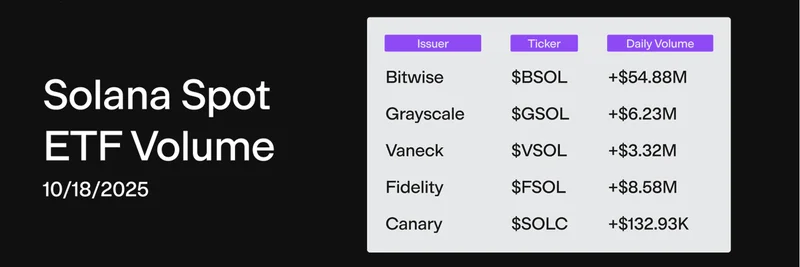BSCNews just dropped an exciting tweet highlighting Telcoin $TEL, a platform that's gearing up to shake up the world of crypto banking, especially in the US. If you're into blockchain and meme tokens, understanding projects like Telcoin can give you an edge, as they bridge traditional finance with decentralized innovations. Let's dive into what this ultimate guide covers, breaking it down in simple terms so you can grasp why $TEL might be a game-changer.
What is Telcoin?
Telcoin is all about combining the massive reach of telecommunications with blockchain tech to make financial services more accessible. Think of it as turning your mobile phone number into a gateway for things like sending money abroad (remittances), making payments, or even basic banking. Unlike traditional banks, Telcoin uses mobile network operators—MNOs, the companies behind your cell service—as validators in a decentralized finance (DeFi) system. This could help the 1.4 billion people without bank accounts worldwide, leveraging telecom's connection to over 5 billion subscribers.
A Quick Look at Telcoin's History
Started in 2017 in Singapore as an Ethereum-based token, Telcoin initially focused on slashing the high costs of remittances—that $700 billion market where people send money home from abroad. By 2020, it was integrated with mobile money services in over 20 countries, keeping fees below 2%. Fast forward to 2023-2024, and they've shifted toward full-on digital banking, emphasizing security and compliance after a hack (they recovered the funds and beefed up audits). In May 2025, they earned SOC 2 Type I certification, signaling they're serious about building a regulated "Internet of Money" powered by telecoms.
Meet the Team Behind Telcoin
Leading the charge is CEO Paul Neuner, a telecom veteran with over 20 years of experience who founded Mobius Wireless Solutions. He sees MNOs as the key to unlocking DeFi for the masses. Co-founder Claude Eguienta brings fintech and blockchain smarts to the table. The team has grown to over 50 people, with offices in Nebraska, and recent hires like EVP Patrick Gerhart from P4Cap. Their board includes advisors from big telecom players like Viettel Group, ensuring strong industry ties.
Telcoin's Tech and Offerings
Right now, Telcoin runs on the Polygon blockchain for cheap, fast transactions. But they're building their own Layer 1 chain called Telcoin Network, which is EVM-compatible (meaning it works with Ethereum tools) and uses MNOs as validators in a Decentralized Physical Infrastructure Network (DePIN) setup. This promises super-low fees, high speed (1,000 transactions per second), and built-in compliance. Security features include multi-signature wallets, AI for spotting fraud, and regular audits from firms like Certik.
On the product side, the Telcoin Wallet lets you send remittances to over 40 e-wallets in 20+ countries, trade in DeFi, and earn yields—all tied to your phone number. They also offer stablecoins like eUSD (backed 1:1 by US dollars) for everyday use. The DeFi suite includes swaps, lending, and farming, with bridges to other chains like Ethereum and Arbitrum. Roadmap highlights include an alpha mainnet in May 2025 and full migration from Polygon by 2026.
Tokenomics of $TEL
The $TEL token is the fuel for the platform, used for fees, staking, and accessing services. There's a total supply of 100 billion tokens, with about 91 billion in circulation as of July 2025. Allocations go to community incentives, team vesting (locked over time), and liquidity pools—no more tokens will be minted. You can stake $TEL to earn a share of trading fees or refer friends for rewards, which ties growth directly to user activity.
Key Partnerships and Growth
Telcoin has teamed up with major players like GSMA members (think Orange, Vodafone, and Viettel) and mobile wallets like GCash. They're aiming for 50+ MNO validators by the end of 2025. Recent collabs include Powerhive for EV loans using stablecoins (March 2025) and the Game Company Alliance for integrating $TEL into over 1,300 games (February 2025). These partnerships blend Web2 telecom with Web3 finance, expanding reach.
Latest News and Market Stats
Big wins include the US GENIUS Act in mid-2025, which sets rules for stablecoins, and conditional approval for Telcoin's Digital Asset Bank in Nebraska—set to launch in September 2025 as the first regulated crypto bank issuing eUSD. Wallet updates, testnets with MNOs, and GSMA involvement keep things moving. As of July 18, 2025, $TEL trades at around $0.007 with a $651 million market cap and solid daily volume. It's available on exchanges like KuCoin, Uniswap, and Bybit. While volatile, regulatory progress and partnerships are driving interest.
User Adoption and Metrics
The wallet has over 200,000 downloads and saw 150% year-over-year growth in active users thanks to version 4.0. Remittance volumes hit $50 million in Q2 2025, up from $20 million the year before. In DeFi, they've got $150 million in total value locked (TVL), with yields around 5-8% APY. Over 20 million $TEL staked and thousands of referrers show strong community engagement.
Why Telcoin Matters for Crypto Enthusiasts
In a world where meme tokens often grab headlines for quick pumps, Telcoin stands out by solving real problems like financial inclusion through telecom-blockchain fusion. It's not just hype; with regulatory approvals and global partnerships, it could pave the way for more practical DeFi applications. If you're holding or trading $TEL, keep an eye on the bank launch and network upgrades—they could boost adoption big time.
For the full scoop, check out the original guide on BSC News. Stay tuned to Meme Insider for more insights on how projects like this intersect with the wild world of meme tokens and blockchain tech.

